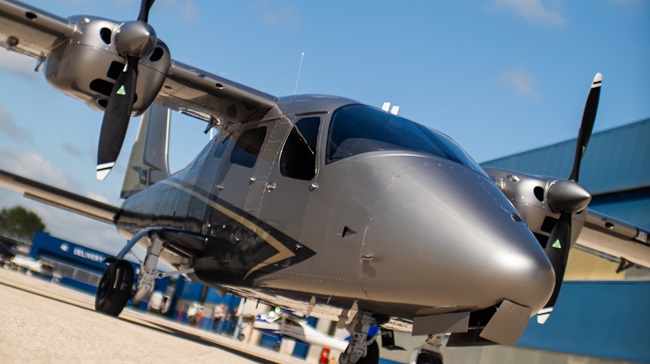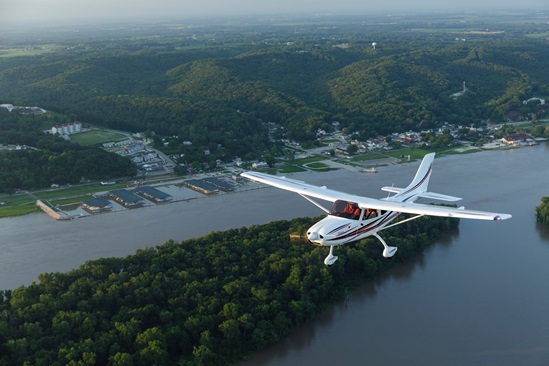Light sport Eagle Viper SD4 costs less than $90,000
Eagle International Aircrafts introduced the light sport Eagle Viper SD4 to European pilots 10 years ago as a side product for its heavy machinery parent company. The $89,900 low-wing aircraft, now available in the United States, has since evolved into one of the “most attractive aircraft” in the sector, said general manager Adrian Lecky.
The two-seater, developed in Slovakia, was previously built and flown under the auspices of Europe’s EASA type certification and “after working hard with the FAA” for U.S. certification, “now it is ready to fly in the United States,” Lecky announced.
Operators of the Eagle Viper SD4 can expect to cruise at 119 knots with a standard range of 400 nautical miles, which can be stretched to 648 nm with the optional larger tanks. Takeoff distance over a 15-meter obstruction is said to be 590 feet; landing distance over the same barrier is said to be 524 feet, and the climb rate is just shy of 1,000 fpm.
Pilots flying the aircraft from the company’s Fort Lauderdale, Florida, base to Oshkosh, Wisconsin, for EAA AirVenture noted fuel burn that “averaged between two-and-a-half to three gallons per hour” on the fuel-injected, 100-hp Rotax 912 iS model, noted Lecky.
The tricycle-gear aircraft, priced just below $90,000, is delivered with a ballistic recovery parachute system and an analog instrument panel. It can be configured with an all-digital Dynon SkyView instrument panel and navigation system at additional cost. “We can start from here and then anything is possible” for customization, said Lecky. Owners who elect the Dynon glass can expect to pay $139,900, and the top-dollar option is $160,000 with an autopilot, a more powerful Rotax engine, in-flight adjustable propeller, and other features.
Glider-towing capability of up to about 1,650 pounds is a distinguishing feature of the Viper, which might make the aircraft more attractive to sailplane operators.
The company’s first U.S. training center is based in North Perry, Florida, and the firm is looking to expand certification throughout North and South America.
Lecky said the Eagle Viper SD4 had “great potential” for flight schools or private owners because of its spacious cockpit, “really excellent view,” robust metal construction, low fuel consumption, and minimal operating costs.



